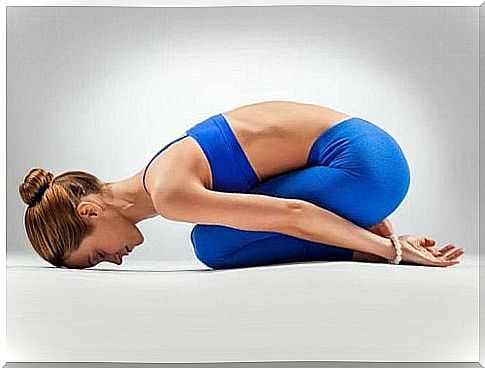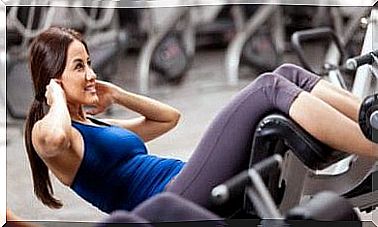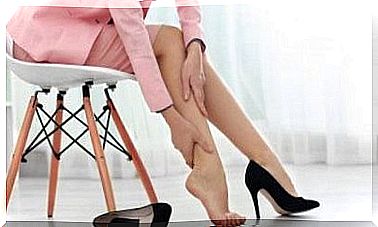5 Yoga Positions Perfect For Those Who Are Not Very Flexible

There are many people who are very inflexible. This causes them muscle and joint pain, as well as great frustration when it comes to stretching or performing certain positions. Therefore, today we will reveal 5 yoga positions suitable for those who are not very flexible that can help you feel better.
Yoga is not just a practice that brings mental well-being: it also allows us to improve our physical condition. And if we have very little elasticity, that doesn’t mean we can’t practice it. In reverse. There are yoga positions suitable for us too.
5 yoga positions for those who are not very flexible
Some of the yoga poses we will see will help you improve your flexibility over time. However, you must have patience and be consistent. Obviously, we advise you not to force the body too much. This could cause injury.
1. Position of the child
This is one of the first yoga poses for those who are not very flexible. You will love it. It is usually done at the end of a yoga session to relax the muscles.
This posture, which is also known as Tadasana, is very important. It stretches the hips, thighs and ankles while relieving back pain. Many people do it after doing the pine pose to relax the neck as well.

2. Downward facing dog
This second yoga posture suitable for those who are not very flexible can cause some discomfort at first. The way to do it correctly is to create a mountain with the body by stretching the arms and legs while the head is in our arms.
The ideal in this position is that the feet are completely resting on the ground. If you are not very flexible, you will not be able to do it perfectly at first and you will have to lift your heels.
But don’t worry. With time and practice you will be able to lower your heels until your feet are completely on the ground. This position promotes blood circulation and stretches the whole body. It is ideal for the time of warm-up.
3. Bridge
This position can also be difficult to perform correctly if you are inflexible. But, as with the previous one, over time you will be able to do it much better, thus benefiting from all its advantages.
- Lie on your back and lift your glutes as high as you can.
- The feet must be completely flat on the floor and the arms must be stretched along the body, with the hands intertwined.
This yoga position helps stimulate the organs of the abdominal cavity, as well as improve digestion. It is one of the most important positions for women as it helps relieve menstrual pains.
4. Position of the half dove

This fourth yoga position for those who are not very flexible, like the previous positions, is ideal for gradually improving elasticity. In case you find it very difficult to perform, you can help yourself with some support to facilitate it.
This position improves posture and body alignment. Also, if we have sciatica problems, it will help relieve the pain a little.
5. Bending in feet towards the ground
The last of the yoga poses for those who are inflexible is what is called Uttanasana.
- To perform it we will stand up, with our feet firmly planted on the ground and we will try to touch them with our hands.
- If we are inflexible we will not be able to reach our feet, but it does not matter. We will stay at the height we can reach and we will hold the legs from the back.
- The goal is to bring the body as close as possible to the legs and touch them with the head.
All these yoga poses will allow us to improve elasticity. Some of them much more than others. There are some positions that will be very easy for you. This is good. It will help you to have confidence in yourself and to move forward.
Are you inflexible people? Have you found any progress in yoga practice? We encourage you not to give up, because over time you will have more elasticity. You just need perseverance and a lot of patience.









